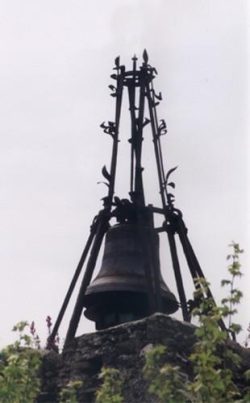Saint-Ambroix (Gard)
The medieval village may have been named after the protector of the original church, Saint-Ambroise, archbishop of Milan.
The first temple was built as early as 1574
In 1560, Protestantism was present in Saint-Ambroix. The bishop of Uzès, Jean de Saint-Gelais and his canons chose the Reformed faith. Meetings were held in private homes, then the Consuls’ hall was used for worship, and the Dugas Catholic church demolished.
The first temple was built in the centre of the city, between the street with the town-hall and the Portalet walls. It measured 24m long and 12m wide. In 1609 it was enlarged and a steeple with a bell was added.
In 1682, the bishop of Uzès wanted the temple to be destroyed, arguing that the local Reformed church had been illegally built. The Protestants saved it by proving that the construction was dated prior to the Edict of Nantes (1598).
At the Revocation in 1685, the temple was destroyed. The 98 cm-diameter bell was smashed and recast by the Catholics to be set in the Clock Tower where it still remains.
A new temple was built in Saint-Ambroix as late as in 1822.
Saint-Ambroix (Gard)
Saint-Ambroix
Bibliography
- Books
- DUBIEF Henri et POUJOL Jacques, La France protestante, Histoire et Lieux de mémoire, Max Chaleil éditeur, Montpellier, 1992, rééd. 2006, p. 450
- LAURENT René, Promenade à travers les temples de France, Les Presses du Languedoc, Millau, 1996, p. 520
- REYMOND Bernard, L’architecture religieuse des protestants, Labor et Fides, Genève, 1996
Associated notes
-

The Edict of Nantes (1598)
This was Henri IV’s major achievement : the terms of this edict ensured the peaceful coexistence of Catholics and Protestants and brought a stop to all hostilities in France after 36 years...

